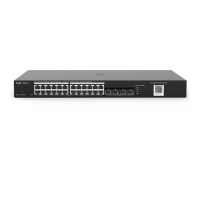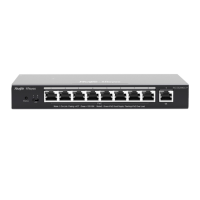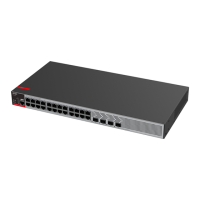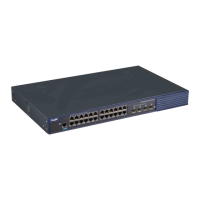RG-ES206GS-P Series Switches Hardware Installation and Reference Guide Preparing for Installation
11
● The cross-sectional area of the protective ground cable should be at least 0.75 mm
2
(18 AWG).
● Install the switch by using 3-core power cords, with a minimum cross-sectional area of 0.75 mm
2
or
18AWG per pin.
Lightning Grounding
The lightning protection system of facilities is standalone, and is composed of a lightning rod, a down conductor,
and a connector connected to the grounding system. The grounding system is usually used for power reference
grounding and safe grounding of the rack. Lightning discharge grounding is required only for facilities and is not
required for the device.
EMC Grounding
Grounding required for electromagnetic compatibility includes shielded grounding, filter grounding, noise and
interference suppression, and level reference, which contribute to the overall grounding requirements. The
resistance of the grounding cable should be smaller than 1 ohm.
The switch provides one grounding connector on the back panel, as shown in Figure 2-1.
Figure 2-1 Grounding of the Switch
2.2.6 Lightning Protection Requirements
When an AC power cord is introduced from outdoors and directly connected to the power port of the switch, the
AC power port must be connected to an external lightning resistance socket to protect the switch against
lightning strokes. The lightning resistance socket is used as follows: Connect the mains AC power cable to the
lightning resistance socket and then connect the switch to the lightning resistance socket. This prevents the
current of high-voltage lightning from directly passing through the switch along the mains cable.
Note
● Surge arrestors are customer supplied.
● For details of lightning resistance sockets, see the related user guide.
2.2.7 EMI Requirements
All electromagnetic interference (EMI) sources, either from outside or inside of the device or application system,
affect the device by capacitive coupling, inductive coupling, or electromagnetic waves.
EMI occurs due to radiation or conduction, depending on the transmission path.
When the energy, often radio energy, from a component arrives at a sensitive component through space, the
energy is known as radiated interference. The interference source can be both a part of the interfered system
